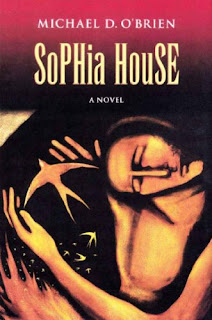Actually, this is not a joke about
changing a light bulb. (If it were, I imagine the answer would have to do with
how hard it is to come to consensus on weighty issues.)
Rather, this is a story about how
many different yearly meetings contributed to the beginnings of the Bolivian
Friends Church (INELA).
In previous blogs we’ve seen how a
Native American who was converted and discipled under California Yearly Meeting
gave his life as a missionary to Bolivia after a few months preaching on the
streets of La Paz. We’ve seen how this man, William Abel, partnered with Quaker
missionaries from yearly meetings in Kansas (Florence Smith) and Indiana (Emma
Morrow and Mattie Blount) in 1919, a year of beginnings.
Our attention now turns to a young
Bolivia mestizo, Juan Ayllón, who was drawn to the witness of these early
Quaker missionaries and became a convinced Friend, also in 1919. Ayllón was
particularly attracted by William Abel, having encountered him one evening praying
publicly in a street meeting. Ayllón found himself moved by the power and
sincerity of Abel’s prayer, and he determined to get to know him. Ayllón joined
Abel and the others in their street ministry, attended Abel in his bout with
small pox, and helped bury him in the public cemetery in La Paz. It had been a
brief but highly impactful relationship. At that point Juan Ayllón seemed to
take on the mantle of William Abel, including Abel’s convictions about adequate
preparation for Christian service.
Through Emma Morrow’s contacts
with the fledgling mission work in Central America, Juan Ayllón received an
invitation to study in the new “Berea Training School for Christian Workers” in
Guatemala. Missionary to Guatemala, R. Esther Smith (California Yearly Meeting)
was especially interested in this young Bolivian and offered him a full
scholarship in the new training school. So, in the fall of 1920, Juan Ayllón
began a four-month journey (via trains, boats, and a donkey) from La Paz,
Bolivia to Chiquimula, Guatemala.
The journey itself was a series of
misadventures (which you can read about when the book is published). Juan
earned his passage through manual labor. Legal problems prevented his
disembarking in Central America, and he ended up in New York City, knowing no
one and speaking little English.
Arriving on February 14, the
ship’s captain let Ayllón occupy his room on board for five days while the ship
reloaded. After that time, on a Sunday morning, Ayllón gathered his belongings
to leave at a police station in New York City while he attempted to arrange for
his passage to Guatemala. A policeman at the station, upon learning that Ayllón
was a Quaker, “just happened” to know of a Friends meeting house nearby and
gave him directions.
Ayllón was the first to arrive at
the meeting house and he prayed in silence for someone to help him. After the
meeting, people were interested in his story. Paul Furnas of New York and
Frederick Swan of New Jersey hosted him for the next few weeks. Between them
they arranged for his trip by train to New Orleans, and then by ship to the
east coast of Guatemala. Thanks to the grace and generosity of these Quakers,
Juan Ayllón finally arrived in Chiquimula on the evening of March 9, 1921, late
for the beginning of classes, but much welcomed.
Ayllón spent the next three years
in the Berea Training School. In January of 1924, he married Honduran
classmate, Tomasa Valle, and in the Central American Friends Yearly Meeting
sessions, Juan and Tomasa were commissioned as their first missionaries to
Bolivia. They sailed in April, arriving in La Paz in May of 1924, thus
beginning a new phase in the development of the Bolivia Friends Church. In the
years between 1924 and 1930, years which saw the first official Friends
Churches (INELA) planted in Bolivia, the mission work was supported by the
Central American Friends Church and Mission, through the service of Juan and
Tomasa Ayllón.
Getting to this place in the story
required the contributions of Friends from California, Kansas, Indiana, New
York, New Jersey, Honduras, and Guatemala. Oregon Yearly Meeting would not
become involved until 1930. But that’s another chapter.
I should also add that
Ayllón’s fascinating conversion story involved a Methodist missionary, a
Salvation Army evangelistic service, and a small Baptist church, after which
Ayllón met William Abel and became a convinced Friend. (Read the book for the
details.)
This particular light bulb
required many Christians, as well as many Quakers, to finally reach the
light-giving point!





